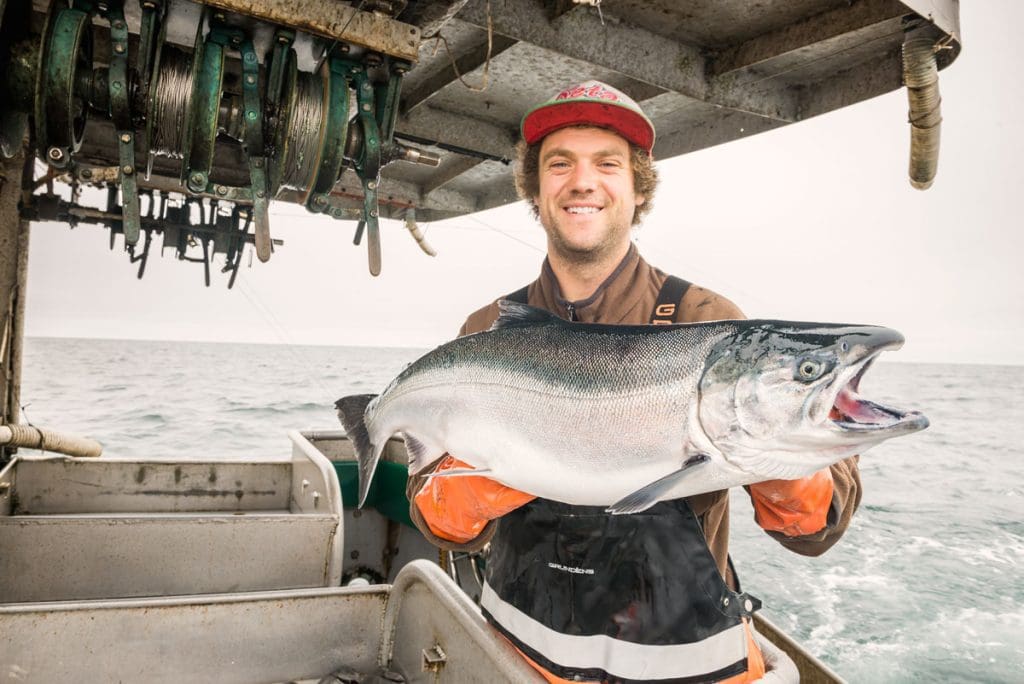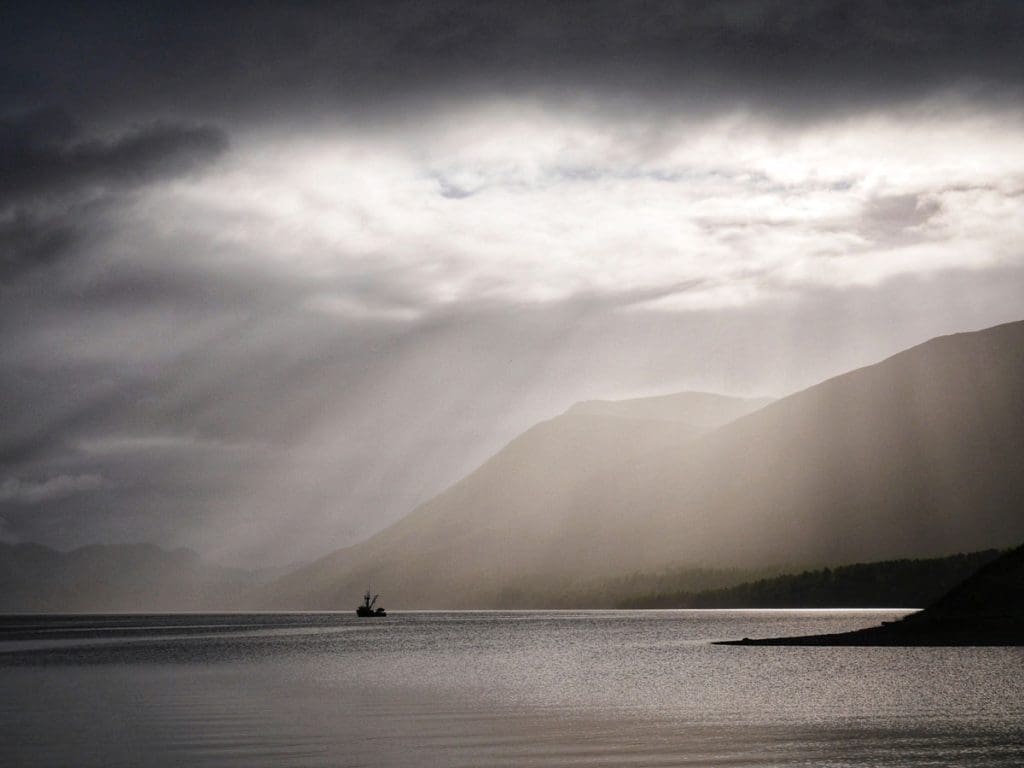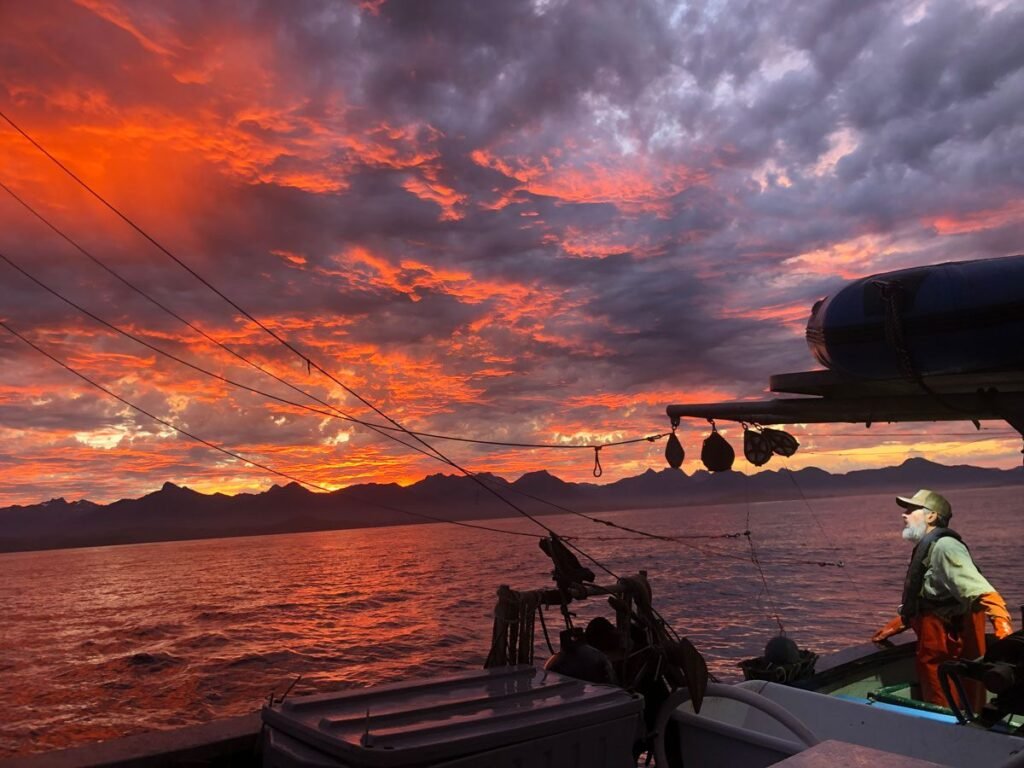Do you know the difference between wild-caught and farm raised seafood, or why one might be better than the other? Seafood plays an important role in our diets, but do we really understand the environmental impacts of consuming it?
With the depletion of natural fish stocks due to commercial overfishing, many fishermen have turned to farmed fish as a sustainable source. However, it is estimated that 70 per cent of the edible seafood Australians consume (by weight) is imported, predominantly from Asian farms where there are few regulations on quality and safety standards. Knowing what to look for when buying sustainable seafood can ensure that your meal is as healthy and eco-friendly as possible.
Wild caught sustainable seafood is often preferable to farmed fish, since wild caught varieties tend to be fresher, safer, and more nutritious than their farm grown counterparts. In this article, we will explore why wild caught sustainable seafood is superior to farmed and how you can get the best from your local market.
We’ve all read about the dangers of overfishing, and how farmed fish is not as healthy for us. But when it comes to seafood, is wild caught really better than farmed?
Eating sustainable seafood is important for both humans and the environment. Wild-caught sustainable seafood provides a wealth of essential nutrients, but many people are unsure of which type to buy, or where to find the best source.
Wild-caught sustainable seafood can provide vital nutrition for our bodies, along with providing a better alternative over purchasing farmed fish. The good news is that finding sustainably sourced fish is becoming much easier. In this article, we will explore why wild caught sustainable seafood is better than farmed, and how you can get the best quality sources.
Overfishing and Overfished Stocks
If too many fish are caught, and there aren’t enough adults to reproduce and maintain a healthy population, then the stock has been overfished.
By the early 1990s, the impacts of overfishing were becoming an increasing concern, leading to the disastrous collapse of Canada’ s Grand Banks cod fishery in 1992. More than 35,000 fishermen and plant workers from more than 400 communities were laid off.
According to the United Nations FAO’s 2020 State of World Fisheries and Aquaculture (SOFIA) report:
- Over a third (34.2%) of fish stocks have been fished beyond sustainable limits.
- Global capture fisheries output has increased by 14 percent from 1990 to 2018.
- One third of the global marine catch is lost during the fishing, processing, and distribution stages, and this figure rises to 50% in richer regions such as the Pacific Ocean.
- Intensively-managed fisheries tend to see declines in average fishing pressures and increased stocks, sometimes reaching biologically sustainable levels.
- Improved management has led to an increase in stocks under-fished and sustainably caught in 2017.
Both Australia and New Zealand have a strong seafood industry and some of the best sustainable fishing practices in the world. We are closely bonded through our lifestyle and relationships with the seas surrounding us. The marine wildlife of over 320 different species of sharks and rays, with 70 species unique to Australia, are found nowhere else on earth!
Our Governments, states and regions have very clear plans and work closely with sustainably managed fisheries, recreational fishers and Indigenous communities.
“Australia is a world leader in sustainable fisheries management and we want to make sure this remains the case into the future,” Minister Ruston said.
However, commercial fishing using trawls, nets, and lines put marine life at risk. Gillnets set off the Great Barrier Reef kill Snubfin dolphins and dugong (sea cows). Tuna is caught using lines called longlines. Longlines also kill seabirds and sea turtles. Sawfishes are caught by trawlers across Australia’s tropical northern coast.
Overfishing of certain species has resulted in others becoming endangered, such as gulpfish and schoolsharks, because they’ve been fished out too fast for too long.
We must take care not to damage our ocean ecosystems while we’re taking from them, so that we can preserve their health for future generations.

Sustainable Seafood Fisheries
We have a lot riding on our relationship with the ocean. If we continue down the path of overfishing, climate change, pollution, habitat destruction and invasive species, it could spell disaster for us all. But there is hope.
While we do import some species into Australia and New Zealand we generally catch more than we consume. This still allows both countries to export healthy amounts while working to maintain sustainable seafood practices. These include monitoring and managing the health of the fishery, preventing overfishing, rebuilding depleted stocks, minimising bycatch and conserving habitat.
To do this, management plans must take into account both the needs of fishermen and the needs of the broader community. This includes considering the impact of catching seafood on local economies and ecosystems. The United States also works closely with other countries to develop international fisheries agreements that help achieve global fishing objectives.
Australia’s seafood trade 2015 – Quick facts:
- Australia’s seafood comes from wild capture and aquaculture sources.
- The amount of seafood (edible and non-edible) produced in Australia has remained relatively stable over the last 20 or so years at around 230 000 tonnes per year.
- It is estimated that Australians consumed around 345 000 tonnes of edible seafood products in 2012–13 (Stephan and Hobsbawn 2014). By volume, imported seafood accounted for around 66 per cent of this consumption.
- The value of Australian fisheries and aquaculture production is around $2.4 billion each year.
- Australia exports around $1.2 billion of seafood products annually.
- The total value of Australian imports of fisheries products (edible and non-edible) increased by 3 per cent ($42 million) to $1.65 billion in 2012–13.
- Australia has the world’s third largest Exclusive Economic Zone. However, the low productivity of our marine waters limits wild capture fisheries production.
- In developed countries, demand for seafood is often greater than domestic production can support. The United States, Japan and European Union, including the United Kingdom, are all net importers of seafood products.
- Australia differs from many other developed countries in that a significant proportion of Australian product, which could otherwise supply the domestic market, is sold to export markets due to price.
A 2016 meta-analysis of DNA identification studies of seafood found that globally there was a 30 percent error rate. However, a 2019 DNA analysis by MSC (Maritime Stewardship Council) found that seafood marked with its sustainable label was correctly labeled 99.9 percent of times.
A major problem with these labels is that gaining them requires a substantial amount of time and effort from small-scale fisheries, which may not have the resources to obtain them. For example, some certifications are more available to smaller scale fisheries than others, such as fair trade certification.
Source: bbc.com
List of wild-caught sustainable fisheries
Wild Seafood and Fisheries
While there is no such thing as a sustainable species of fish, there are sustainable populations of fish. Fishermen and fisheries that choose to catch sustainably improve with science, better practices and performance over time.
We offer a wide range of wild-caught and sustainably sourced seafood from Australia and New Zealand on our website, fishandco.com.
More wild-caught or sustainable species from Australia and New Zealand:
- Crabs
- Mullet
- Octopus
- Orange Roughy
- Southern Blue Whiting
- Swordfish
- Toothfish
- Tuna – other species Bigeye, Bluefin, Yellowfin and Skipjack
Farmed Seafood (Aquaculture) vs Wild Caught
Farmer fish is not necessarily better for you than wild caught fish. Sadly, there isn’t an easy answer here. What’s the difference? Wild-caught fish is usually captured from its natural environment (lakes, oceans, rivers), whilst farmed fish is often kept in large tanks. On your plate or in the grocery aisle, they may look the same, but they’re not guaranteed to be equal.
The biggest difference between wild and farm-raised fish is that wild fish are raised on their own food source – a diet of plankton and other small organisms. Farm-raised fish are fed a mix of grains and protein supplements. This means that the nutrients found in wild fish are likely missing from the feed given to farmed fish.
Nutrition: The nutritional quality of the fish largely depends on what the species eats. Wild fish usually consume a natural diet and contain less saturated fats than farmed fish. Fish from farmed sources may contain slightly higher levels of omega-3 fatty acids than wild caught fish because they’re fed fortified feeds.
Contamination: Some research has found that farmed fish may contain more pollutants than wild caught. Furthermore, farmed fish tend to be more prone to disease because of their living conditions. Mercury can be found in both farmed and wild-caught fish because of industrial pollution that ends up in lakes, streams, and oceans. Large predatory fish have the most mercury. Pregnant women and children should avoid eating shark, swordfish, king mackerel, and tilefish because they contain high levels of mercury.
So, what’s the best choice? The truth is that it depends on where you live, and what local supply options are available to you. If there aren’t many options, then buying frozen wild-caught is your best option.
Is farmed or wild-caught fish healthier?
Species can vary widely depending on whether they’re wild or farmed. It’s therefore important to think about where your fish was sourced. Wild-caught fish tend to be higher in certain nutritional values and have a more desirable fatty acid profile than farmed fish. Wild-caught salmon has a natural balance of omega-3 fats and other important nutrients. Furthermore, wild fish tend to have lower levels of mercury than farmed fish.
One example of how a fish’s diet directly affects its quality is the bright red color of wild-caught salmon. This color is a result of a diet heavy in krill, rich in a red-pigmented antioxidant called astaxanthin.
Farmed salmon usually appear pale pink because they cannot eat krill in captivity. Rather, they are fed corn- or soy-based pellets that contain some pigment — because without this pigment, farmed salmon fillets would end up beige or gray in color.These pellets also decrease the benefit of the healthy omega-3 fats that fish are known for and increase the level of omega-6 fats, which are overabundant in the average person’s diet and in excess can lead to inflammatory health issues. In contrast, a high intake of EPA/DHA from krill oil has been shown to reduce inflammation while maintaining or even improving cognitive function.
You can read more about the difference between wild vs. farmed salmon from the Wild Alaskan Company.

How to Know you are buying wild-caught Fish
Buying eco-friendly seafood is easier if you know where it comes from and how it was harvested or raised. Increase your knowledge of local species with Seafood Watch. At the seafood counter or when eating out, asking the right questions is important. Remember, when consumers request eco-friendly seafood they send a powerful conservation message.
If you want to buy eco-friendly seafood, you may need to do some homework first.
If you’re dealing with a restaurant owner or fishmonger, don’t be afraid to ask them questions—they might just surprise you with some useful information! Here are some questions to ask when you’re unsure whether a label provides enough information:
- What country is it from?
- Is the fish wild-caught or farm-raised?
- If it is farmed, how was it grown? (Was it raised in a polluting open net pen or in a contained tank or pond?)
- If it is wild, how was it caught? (Were long lines used, or was it caught by pole? Long lines often catch extra unwanted “bycatch.”)
- Are populations of this fish healthy and abundant? (Small, fast-growing fish can withstand more fishing pressure, while large, slow-growing species are more vulnerable to overfishing.)
- Are there eco-friendly alternatives?
- Is this fish really a… (red snapper, wild salmon, grouper, etc.)? These are prime candidates for fish fraud.
Where can I buy sustainably-sourced fish?
The best way to ensure you’re getting the best seasonal wild-caught seafood is from a trusted supplier, fishmonger or direct from a certified fishery. Use dedicated services like Seafood Watch. You’ll also be able to spot wild-caught sustainable seafood with the MCS Blue Marine Conservation (Blue Tick) logo in your local supermarkets, select specialty stores and restaurants.
While the larger supermarkets and retailers are stocking more sustainable seafood options you need to be aware. Look out for other non sustainable species and their confusing and often miss-leading labelling that aim to deceive us on their shelfs. If the labelling, titles or description do not clearly spell out where the fish comes from or its sustainable fishing practice then simply leave it.
As long as we buy from a reputable source, it is fine but if you want to make sure you get the best quality fish then look at buying direct from your local fisherman, supplier or fishmonger.
The most important thing is to know what you are eating and where it comes from.
Sustainability on a Shoestring
Arctic char, barramundi, and trout are some types of sustainable fish that are available at various price levels. Opting for the cheaper, farmed varieties has the added benefit of driving demand for responsible, sustainable farming practices.
Source: thebetterfish.com
Governments and industry leaders will achieve the greatest reductions in greenhouse gas emissions, but we can all help by making small changes in the choices we make lif.
One of the most common questions asked here at Fish & Co is how to be Sustainable on a Shoestring.
Look for smaller species of local Wild Caught fish. These are often more plentiful, local and can be cheaper. Tinned or canned fish is a great way to maintain your seafood intake on a budget. Being sustainable here means looking out for the MSC blue tick.
“[The Marine Stewardship Council blue tick] means at least they are being audited, and they have to prove things,” says Clarke. “It’s a great way of quickly and easily identifying whether something’s a sustainable choice.”
Source: bbc.com
With a little research and following what we can do guide you can quickly build a list of your best, most economical, options from your local outlets. We also have good options in our shop for Sydney and interstate customers.
What You Can Do
There are many types of seafood at your local market. It can be hard to know which ones are truly sustainable. If you understand just four simple terms used to categorize seafood, you’ll know which fish are sustainable and which aren’t.
Wild: Thesefish live and are caught in open water and eat a natural diet. Selectively fished from well-regulated sources, these species are healthy and nutritious. However, indiscriminate and illegal harvesting practices have led to declines in wild animal numbers and habitats. Harmful pollutants also threaten wild seafood supplies.
If you want to be sure you’re buying sustainably caught seafood, then look for lesser known fish species that are locally caught and eaten at lower levels of the marine ecosystem (smaller fish), or farmed fish like barramundi. If you see any red-listed seafood on Seafood Watch, avoid it at all costs! Buying less commonly eaten seafood helps to build demand for under-utilised types of seafood. You could also buy sustainably farmed seafood. This helps protect fish stocks by reducing pressure from overfished species.
Fresh: Fresh seafood has never been frozen. When purchasing fish, keep in mind that fresh fish should be bought from a “dock to dishes” service. Otherwise, it is likely that your fish has been out of its water for some time, which can range from a few hours to several weeks. It is important to cook and consume the fish as soon as possible. Fresh fish should be firm and have a pleasant aroma similar to the ocean, not “fishy” or “salty.”
Ask questions to determine if the seafood is fresh. For example, ask where it was caught, how far it was shipped, and how long it sat before reaching the market.
Look out for labels like “refreshed” and avoid it. It means that the fish was previously frozen and then thaws in-store for convenience. It’s better to choose frozen and then thaw it yourself. You want to cook fresh fish as soon as possible after purchase.
Aquaculture: is the process of raising and harvesting fish in ocean or land-based enclosures. When conducted responsibly, aquaculture can be used to provide food for more people while reducing the use of land, energy and freshwater compared to terrestrial farming. Fish farming also emits less carbon dioxide than livestock production. However, poor practices can contribute to habitat degradation, pollution and escapes.
Frozen: The “flash freezing” method is used to quickly freeze fish using ultra-low temperatures, thus preserving them at peak freshness and killing any pathogens for a safer product. When flash freezing, stored, and transported under the right circumstances, there should be no notable difference between fresh and flash-freezed seafood. Additionally, flash freezing reduces air transportation emissions and waste.
Source: thebetterfish.com
You should always look for one of the sustainable seafood certifications: Best Aquaculture Practices (BAP) for farmed fish or Marine Stewardship Council (MSC) for wild-caught fish.
Use apps like SAFA – Sustainable Fish Stocks from Fisheries Research & Development Corp, Fish Planet, Seafood Watch and What Fish to learn more about local Wild Caught Fish. This is a great way to learn more about habitats, stock numbers and fisheries. You can then identify the best outlets to purchase Fresh or Frozen.
Be adventurous with your seafood choices. We all have our favorites with recipes to match. however, there are many species that are sustainably managed with good all year availability that taste very similar to better known species and cook just as well. Species like the New Zealand Ling and Hoki.
How to stop wasting fish
Unsustainable fishing harms the planet because it puts pressure on stock levels, damages ecosystems, and causes species extinction. Currently, three quarters of the world’s stock are either fully fished out or over fished. This can lead to whole species becoming highly endangered like Pacific Bluefin tuna and Swordfish. Sustainable fishing practices have helped some stocks recover where they have been shrinking, and these practices mean that populations are well monitored and managed which, in turn, helps ensure a stable livelihood for people who depend on fishing for their main sources of food and income. Good management also allows fishermen to catch less without harming the ecosystem.
The key to managing fisheries sustainably is to establish and maintain good fishing practices, and avoid fishing beyond annual quotas. These practices include reducing fishing effort, adjusting gear to match habitat conditions, setting seasonal closures, and monitoring stocks regularly to determine what level of exploitation is acceptable.
Sustainably managed fisheries have helped restore depleted populations, and they help to preserve marine ecosystems. Establishing and managing good fisheries practice, and not exceeding annual quotas, means that fish populations remain healthy, which, in turn, ensures a stable livelihood for fishers.
Source: paramount21.co.uk
Are there any marine animals I should avoid entirely?
It is advised to avoid certain seafoods, such as Bluefin Tuna, Orange Roughy, Atlantic Halibut and Eels due to factors like overfishing, slow reproductive rate, and their negative impact on the environment.
It’s a good idea to familiarize yourself with a few local sustainable seafood options and I plan to limit my intake of high-impact food; instead, focusing on smaller fish and mussels, which are particularly nutritionally advantageous.
Source: bbc.com
It is recommended to choose wild fisheries that you enjoy consuming when possible. If your favorite fish is included in the do not eat categories, alternatives that are more environmentally friendly can be found.
Conclusion
With a little research it is possible to learn what the best local wild-caught species are near you, or wherever you are travelling. Sites and apps likeSAFA – Sustainable Fish Stocks from Fisheries Research & Development Corp, Fish Planet, Seafood Watch and What Fish to learn more about local Wild Caught Fish can be your best friend. If you are at your local supermarket or fishmonger, knowing how to spot and smell whether your fish is fresh and asking a few questions will guide you and send your suppliers the clear message to stock wild-caught sustainable seafood. The final step is to know your best supply and recipe options and have them bookmarked for easy access.
When it comes to cooking sustainable seafood, there are a few simple steps you can take to help ensure the best outcome. Start by getting the freshest ingredients possible. The fresher the seafood, the more flavour it will have when cooked. Also, be sure to use minimal seasoning and opt for healthy methods of cooking such as steaming or baking instead of deep-frying.
When it comes to purchasing sustainable seafood, wild-caught fish offers the best option. Wild-Caught Seafood is usually more flavourful and nutrient-dense than farmed fish which often contains added dyes or preservatives. It also helps to support local fishermen who are actively fishing with sustainable practices in mind to preserve our wild fish populations.
Eating sustainable seafood is an excellent way to show that you care about your health and the health of the planet.



